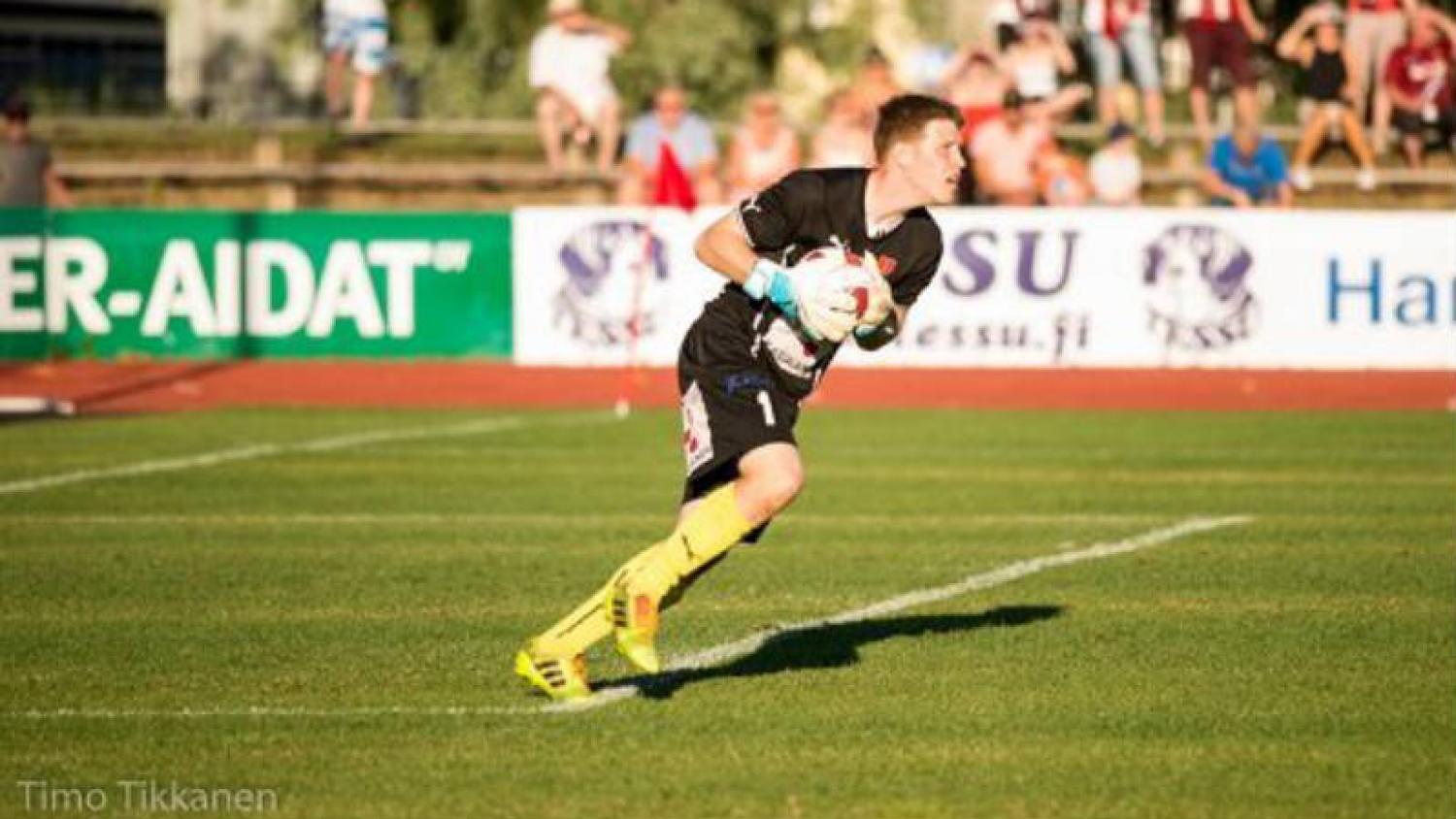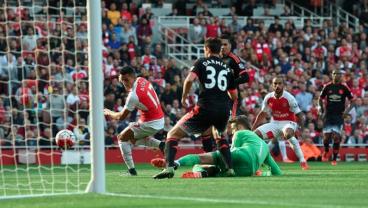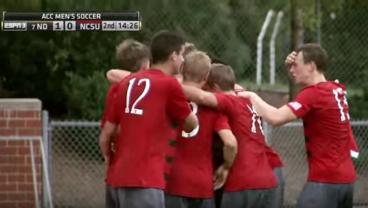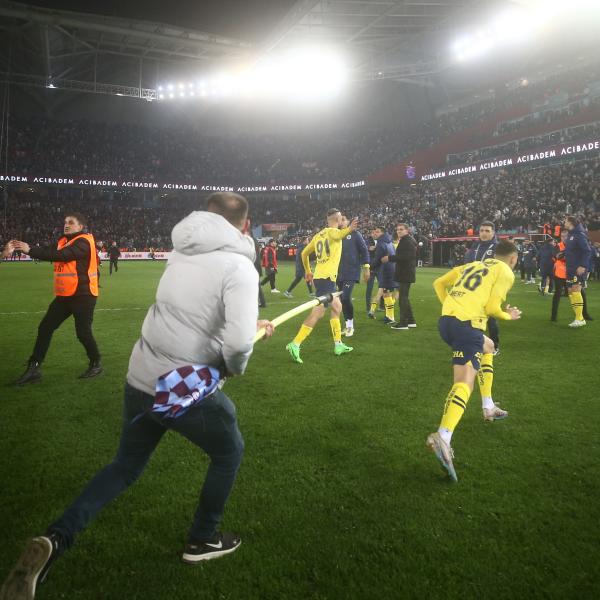It is a typical morning in Joensuu, a moderately-sized college town in Finland. There is a slight chill in the air of this industrial city on the Pielisjoki River as 23-year-old American Nathan Stockie wakes up and plans out his day. He has plenty of time to kill, as he does not have to be at work until 4:30pm that afternoon. What type of work does an American do in a Finnish town that does not require him to be there until 4:30? Bartender? Bouncer? Not quite. You see, Nathan is a professional footballer.
The professional soccer leagues in Europe are widely considered to be the most competitive in the world. It has been very difficult over the years for American players, even those that star on the U.S. National team, to get significant playing time with European clubs because the level of competition is so much higher over there than anything there is to offer in the United States. So imagine the jump in competition between playing for a small college team in the United States and a professional league in Europe and you will get an idea of the magnitude of the journey that Nathan has made.
Nathan Stockie lived in several different places across the United States growing up, but spent the majority of his youth in Beaumont, Texas, a city on the eastern side of the state, about 88 miles from Houston. He was a hyperactive kid, playing whatever sport was in season, whether it was tennis, track & field, baseball, basketball, and of course, soccer.
“As soon I could start walking, I was kicking a ball and as soon as I could sign up for a league, I was playing in a league,” Stockie said. When he was younger, Stockie primarily played striker, but not for the last time, the course of his playing career was altered due to an injury. The senior goalkeeper on his high school team tore his ACL and the team needed a replacement. Because of his athleticism, Stockie’s coach asked him to step between the posts. Though he would still also occasionally play striker (sometimes within the same match), Stockie’s main focus turned to stopping goals rather than scoring them.
As Varsity Blues has taught us, Texas is an American football state, so there were not many youth programs available for soccer. Despite that, Stockie was able to enlist with an academy team called the Dallas Texans that had an affiliate club in Houston. It was during his time as a Texan that he caught his break for college. Academies such as the Texans will often have “showcases” that feature their players in the hopes of attracting interest from college teams. It was at such a showcase that Stockie impressed the manager of Long Island University, TJ Kostecky, who offered Nathan a scholarship, the only Division I school to do so. Though he had opportunities with other schools closer to home, the allure of playing Division I soccer for the mighty Long Island Blackbirds was enough to bring the Texas boy into the cradle of hipsterdom: Brooklyn.
It took Nathan a while to adjust to his new surroundings, as it was a culture shock living in Brooklyn after so much time in Texas. Of his time in Brooklyn, Stockie said, “being a Texas boy and never having been in a big city for a significant period of time was interesting. I found out it wasn’t the place I’d want to live (going forward), but I’m really glad I did it.” It took him even longer to get on the pitch for the Blackbirds, as he red-shirted his first year and did not take over as the starting keeper until his junior year. Though the team struggled, Stockie excelled, recording two of the five highest save totals in Division I his junior season, including a Tim Howard-esque 12 in one match.
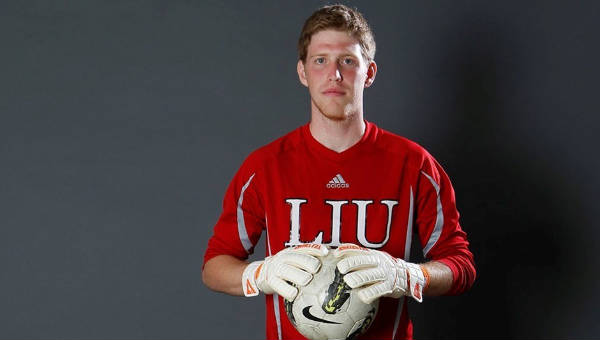
Nathan Stockie's team photo from his senior season at Long Island University. Intensity. (Photo: LIU)
That summer, Stockie took a fruitful trip to Joensuu that would dramatically alter his plans for the future. Stockie’s girlfriend, Emma, is from Finland and he was taking advantage of his summer holiday to visit her. Prior to getting on the plane, Stockie reached out to Jarmo Karhoren, who was the manager of the local soccer club Jippo, through a connection of Emma’s mother (she knew the physio). At the time, Jippo was in the second division of Finnish football. It was mostly a lark, asking to train with the local club while he was on vacation, but Karhoren was game. Stockie impressed the management of the club during his time there and kept in contact with Karhoren and the club’s goalkeeper when he returned to the States, and made them a highlight video of his finest moments at Long Island.
Prior to the start of his senior season that fall, Stockie broke his arm and was unable to regain his starting job when healthy. As a result, he sat the bench for most of his senior year in the fall of 2013 and as a Sports Management major, was beginning to look beyond his collegiate career and was entertaining thoughts of pursuing a future in coaching.
But before he turned to coaching full-time, Nathan continued to communicate with the coaching staff at Jippo about a possible position in the squad. Stockie did not put all of his eggs in the Jippo basket, however, as he sent out over 200 emails to other coaches in Finland, Sweden, and Norway in an attempt to win a contract. Though Karhoren left Jippo after the 2013 season ended, he put in a good word with the new manager, Mika Lähderinne, about Stockie. After the other two goalkeepers on the roster also left the club, Jippo offered Stockie a chance to make his dream a reality: they offered him a contract shortly after Christmas 2013. He was now a professional footballer.
There was no time to revel in his triumph, as Stockie had to leave for Finland on January 15th. Though the season did not start until April, the club wanted to get him over as soon as possible in order to adjust to his new surroundings. The Finnish leagues also have an extremely long preseason, so training with the club started shortly after he arrived. As he began training in the dead of the Finnish winter, Stockie was blown away by the fact that it was pitch black outside at 3 p.m. and it would look as light as the middle of the afternoon when he was coming home from his “cultural excursions” at 3 in the morning. And then there was the cold. My goodness, the cold.
The Finnish football league season runs from April to October, with the clubs in the second division, known as the Ykkönnen, playing 27 league matches plus a domestic cup competition. The Suomen Cup is the Finnish equivalent of the English FA Cup, with the tournament open to all member clubs of the Finnish Football Association. Jippo’s foray into the Suomen Cup was short-lived as they played fellow Ykkönnen club Haka in the severe cold and slush in March. The match was played with temperatures below 0, making it rather difficult for Stockie and the rest of the club to battle Haka and the elements. Jippo lost 4-0 and was eliminated from the Suomen Cup.
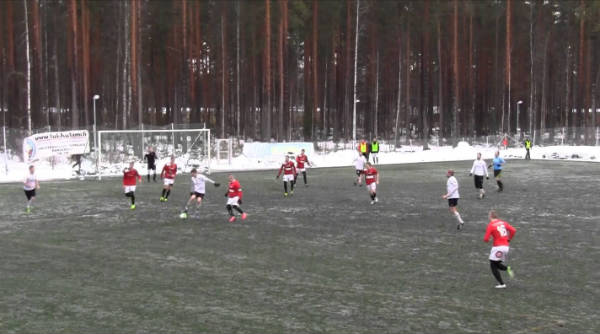
Jippo loses 4-0 to Haka in the snow. Was this match held near the Wall? Photo
After his arrival in Joensuu, he got an apartment with a few of the lads on the team and got to work. Living only a five-minute bike ride from the training ground, he lives in the City Centre and, because the city is so compact, he is able to travel pretty much anywhere in the city by bicycle. Each day, he gets up and works out on his own in the morning because training is not until later in the day, typically from 5:00 to 7:00 p.m. The difference between Jippo’s schedule and the clubs in the first division of Finnish football is stark due to the disparity in financial resources that are available, as players in the first division will have training from 9:00 a.m. to 5:00 p.m. each day. After his morning workout, he frequently coaches the junior players in Jippo’s system as a way to earn extra revenue. He said many of the players on the club have second jobs in order to make ends meet for their families.
All of Jippo’s practices and training sessions are (not surprisingly) conducted in Finnish, so often times, Stockie will have to wait until after the meeting to receive specialized attention from Lähderinne on the truly critical points that the manager wants to emphasize. Stockie says his Finnish is coming along slowly and that he knows a few phrases, but for the most part, everyone in the city (and on the club) speaks English, so communication is not a huge problem.
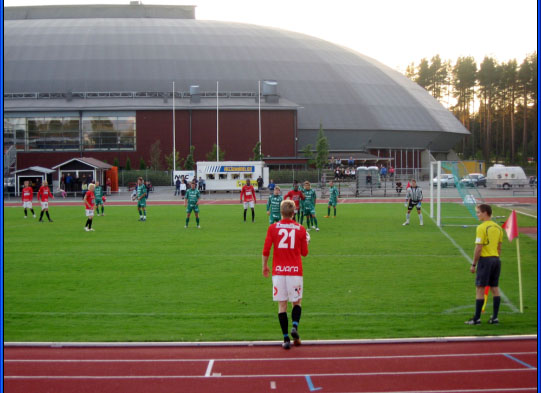
A side view of Jippo's stadium. Photo: WikiMedia
Stockie is not the only American on Jippo, as Miles Byass is also on the squad. Byass played his collegiate soccer for San Diego State against Stockie, so the two have known each other for a while. They are able to work together on translation issues as, along with a Canadian player, they are the only players on the squad that are not fluent in Finnish. Stockie says it is also nice to have someone on the squad that he can talk with about home.
Stockie says that he enjoys living in Joensuu and that the fans of the club have been supportive of both the club and him personally. He will also occasionally get recognized in the local sports bars (though he’s not mobbed, there’s just more of a head-nod of recognition from knowing fans), which he said he enjoyed, as well he should.

The perks of being a local celebrity. We like Jazz too, Nathan. Photo: Twitter
Jippo plays in two different stadiums throughout the course of the year because of the severe variance in temperature. In the winter months, due to the cold, the club must play in a smaller stadium with artificial turf because grass cannot handle play in the winter months. Although the turf is not ideal for play, the benefit of the smaller stadium is that the fans are right on top of the action, creating a raucous atmosphere. When it warms up, they move to a bigger stadium with natural grass, which is great as a surface, but the fans are much further away and the club has had a harder time filling the larger-capacity arena (especially since they have struggled this season).
Natahm also has a good relationship with his teammates at Jippo. Though Stockie says that Finnish people as a whole take a while to warm up to new people, throughout the course of the season, his relationships with his teammates have flourished and he frequently hangs out with them outside the club. Between the connections at the club and his girlfriend’s family and friends, Stockie has a very solid social circle around him in Joensuu.
Unfortunately, though the season has been the fulfillment of a lifelong dream for Stockie, it has not been as memorable for Jippo. Though a newcomer to the club and the country, Stockie quickly became the starting goalkeeper for Jippo. While Stockie garnered 22 starts in the league out of 27 matches, the club struggled mightily throughout the 2014 campaign.
When we spoke with Nathan, there were 4 matches left in the season and Jippo was in second-to-last place. In the Ykkönnn, the bottom-two finishers in the league are relegated to the third division, so the club desperately needed to make a move. Nathan had resigned himself to the fact he would not be starting for the rest of the season because a veteran goalkeeper had been brought in to help the team avoid relegation. Yet, Stockie outperformed the newcomer in training and when the veteran picked up a slight injury, Stockie returned to the starting lineup for the final 3 matches of the season. Unfortunately, the results of those matches were not enough for the club to avoid relegation down to the Kakkonen, the third division of Finnish football.
Nathan saves a penalty against FC Viikingit in Ykkönnen league play.
However, in the final match of the season with Stockie starting in goal, Jippo played league leaders Kotkan Työväen Palloilijat (KTP) on the road. There were 4,200 people in the stands (which is large for that level in that country) and members of the Finnish Football Association were in attendance to present KTP with the first-place trophy and a promotion to the Veikkausliiga, which is the premier division of Finnish football. The champagne was on ice and the confetti guns were at the ready; all KTP had to do to pop the corks was defeat Kakkonen-bound Jippo on home soil.
Though Jippo was already destined for regulation, they fought bravely against the league leaders. KTP put 7 shots on target and took an astounding 17 corners as they attacked Jippo’s goal time and time again in desperate search of a winning goal. And yet, time and time again, Stockie was there to thwart their offensives. Though Jippo failed to put a single shot on target and did not earn a single corner, KTP failed to put one past the young American keeper and the match ended in a dramatic scoreless draw. The draw dropped KTP into second place in the table on goal differential, denying them the trophy and the promotion, as only the first-place team from the Ykkönnen rises to the Veikkausliiga. KTP’s fans were stunned into tears in the stands, ruing the club’s lost opportunity and ruining the town of Kotka’s entire week.
Highlights of Jippo’s 0-0 draw against KTP in the last match of the season, which denied KTP the trophy and kept them in the second-division.
Stockie’s plan for after the season was to return to New York for approximately five weeks to train with his old goalkeeping coach, Roman Stanula, visit his friends at Long Island University, and then head back to Texas to possibly pick up a coaching job in the offseason. He wants to keep playing and his ultimate goal is to play in the first division of Finnish football. “Now that I’m here and I’ve seen the level of competition, I know I can play at this level. I think if I had some constant coaching in the right environment, I can make it to the top flight in Finland for at least a year. I really believe I can do it,” Stockie said.
With the limited financial resources that Jippo has (unlikely to be improved in lieu of relegation), everyone is on a 1-year contract, so there is no guarantee that Stockie will be offered a roster spot next season. He is open to pursuing other opportunities and will be utilizing the full extent of his contacts during the offseason to secure himself a roster spot for next season, whether it’s with Jippo, another Finnish club, or even a club in another country in Scandinavia. It was particularly difficult for him this season to operate without a goalkeeping coach, as he frequently had to come up with his own training routines to keep himself sharp. “It kind of took my mind off playing a little bit,” Stockie admitted, “I would like to find somewhere with a goalkeeper coach, but really, I can’t be picky.” Stockie said that his play was a bit up-and-down throughout this season and thinks that having individualized coaching next season would allow him to maximize the most out of his skills.
And if he can’t find another club? He’s not sure what he wants to do, but he didn’t think he’d ever play football professionally, so he’s already succeeded beyond his wildest expectations. Perhaps he will go into coaching or management, but his love of sports has made him determined to find some way to continue to make a living off of the beautiful game. As they say in Finland, Onnea (good luck) Nathan. Onnea.
Follow Mike Smith on Twitter @thefootiegent
For more highlights of Nathan’s season, click here.


